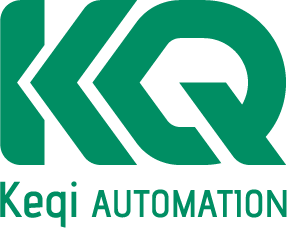Innovative Applications of Silicon Tape in Packaging Machinery
Release time:
2025-10-27
Source:
Silicon tape, known for its unique properties and versatility, has become a crucial component in the manufacturing and processing of packaging machinery. This specialized tape, often made from silicone rubber, exhibits remarkable flexibility, heat resistance, and durability, making it an ideal choice for various applications within the packaging industry.
One of the primary uses of silicon tape in
Silicon tape, known for its unique properties and versatility, has become a crucial component in the manufacturing and processing of packaging machinery. This specialized tape, often made from silicone rubber, exhibits remarkable flexibility, heat resistance, and durability, making it an ideal choice for various applications within the packaging industry.
One of the primary uses of silicon tape in packaging machinery is for insulation purposes. Its high-temperature resistance allows it to be effectively utilized in environments where machines operate at elevated temperatures. For instance, silicon tape can be wrapped around heating elements or components that generate heat during the packaging process. By providing excellent thermal insulation, it helps maintain optimal operating conditions and reduces energy consumption, ultimately leading to cost savings for manufacturers.
Moreover, silicon tape serves as an effective sealing solution. In packaging machinery, ensuring airtight seals is essential to preserve the quality and freshness of products. Silicon tape can be employed to seal joints and gaps in machinery, preventing contamination and moisture ingress. This is particularly advantageous in the food packaging sector, where maintaining hygiene and product integrity is paramount. The tape's adhesive properties allow it to bond securely to various surfaces, providing a reliable seal that withstands the rigors of packaging processes.
In addition to insulation and sealing, silicon tape is also utilized for vibration dampening. Packaging machinery often experiences vibrations during operation, which can lead to wear and tear over time. By applying silicon tape to critical components, manufacturers can minimize vibration transmission, thereby enhancing the longevity of machinery and reducing maintenance costs. This application is especially beneficial in high-speed packaging lines, where machinery operates continuously and the risk of mechanical failure increases.
Another emerging trend in the use of silicon tape is its application in the design of custom machinery components. The flexibility and moldability of silicon tape allow engineers to create unique shapes and sizes tailored to specific packaging requirements. This adaptability not only enhances the functionality of machinery but also enables manufacturers to optimize their production processes based on individual product specifications.
In conclusion, the application of silicon tape in packaging machinery presents numerous advantages, from thermal insulation and effective sealing to vibration dampening and customization opportunities. As the packaging industry continues to evolve, leveraging the unique properties of silicon tape can lead to improved operational efficiency, reduced costs, and enhanced product quality. Manufacturers should consider incorporating silicon tape into their machinery design and maintenance strategies to stay competitive in this dynamic market.
One of the primary uses of silicon tape in packaging machinery is for insulation purposes. Its high-temperature resistance allows it to be effectively utilized in environments where machines operate at elevated temperatures. For instance, silicon tape can be wrapped around heating elements or components that generate heat during the packaging process. By providing excellent thermal insulation, it helps maintain optimal operating conditions and reduces energy consumption, ultimately leading to cost savings for manufacturers.
Moreover, silicon tape serves as an effective sealing solution. In packaging machinery, ensuring airtight seals is essential to preserve the quality and freshness of products. Silicon tape can be employed to seal joints and gaps in machinery, preventing contamination and moisture ingress. This is particularly advantageous in the food packaging sector, where maintaining hygiene and product integrity is paramount. The tape's adhesive properties allow it to bond securely to various surfaces, providing a reliable seal that withstands the rigors of packaging processes.
In addition to insulation and sealing, silicon tape is also utilized for vibration dampening. Packaging machinery often experiences vibrations during operation, which can lead to wear and tear over time. By applying silicon tape to critical components, manufacturers can minimize vibration transmission, thereby enhancing the longevity of machinery and reducing maintenance costs. This application is especially beneficial in high-speed packaging lines, where machinery operates continuously and the risk of mechanical failure increases.
Another emerging trend in the use of silicon tape is its application in the design of custom machinery components. The flexibility and moldability of silicon tape allow engineers to create unique shapes and sizes tailored to specific packaging requirements. This adaptability not only enhances the functionality of machinery but also enables manufacturers to optimize their production processes based on individual product specifications.
In conclusion, the application of silicon tape in packaging machinery presents numerous advantages, from thermal insulation and effective sealing to vibration dampening and customization opportunities. As the packaging industry continues to evolve, leveraging the unique properties of silicon tape can lead to improved operational efficiency, reduced costs, and enhanced product quality. Manufacturers should consider incorporating silicon tape into their machinery design and maintenance strategies to stay competitive in this dynamic market.
How to Setup Tape Applicator Head
2025-11-08

